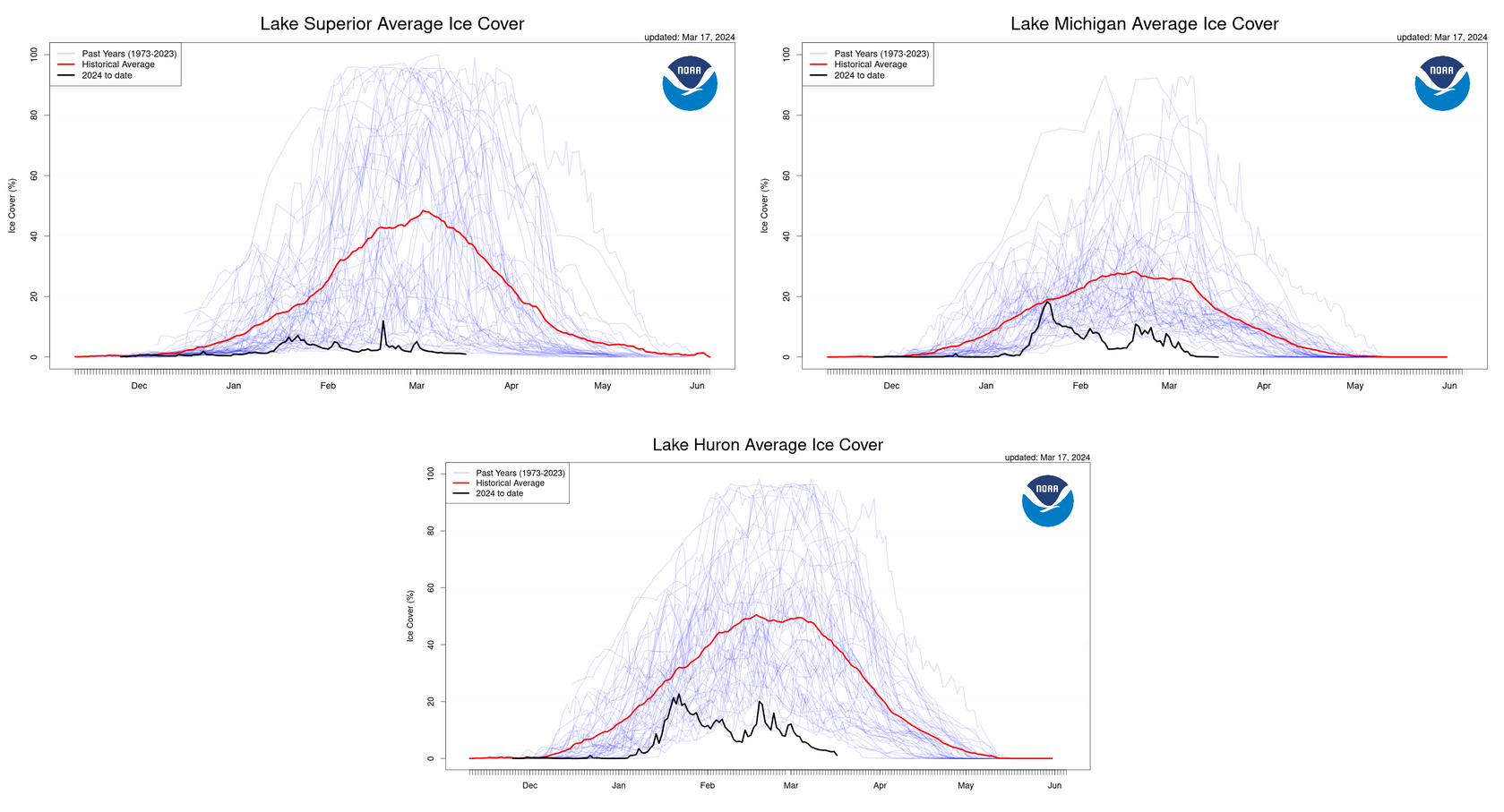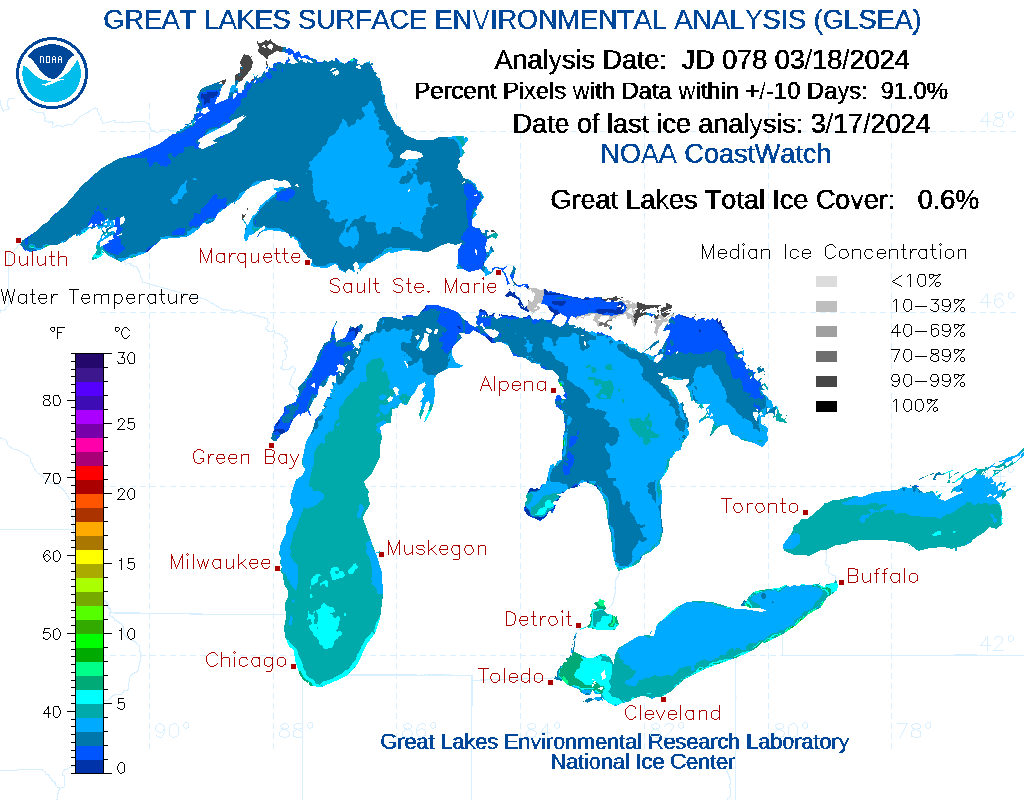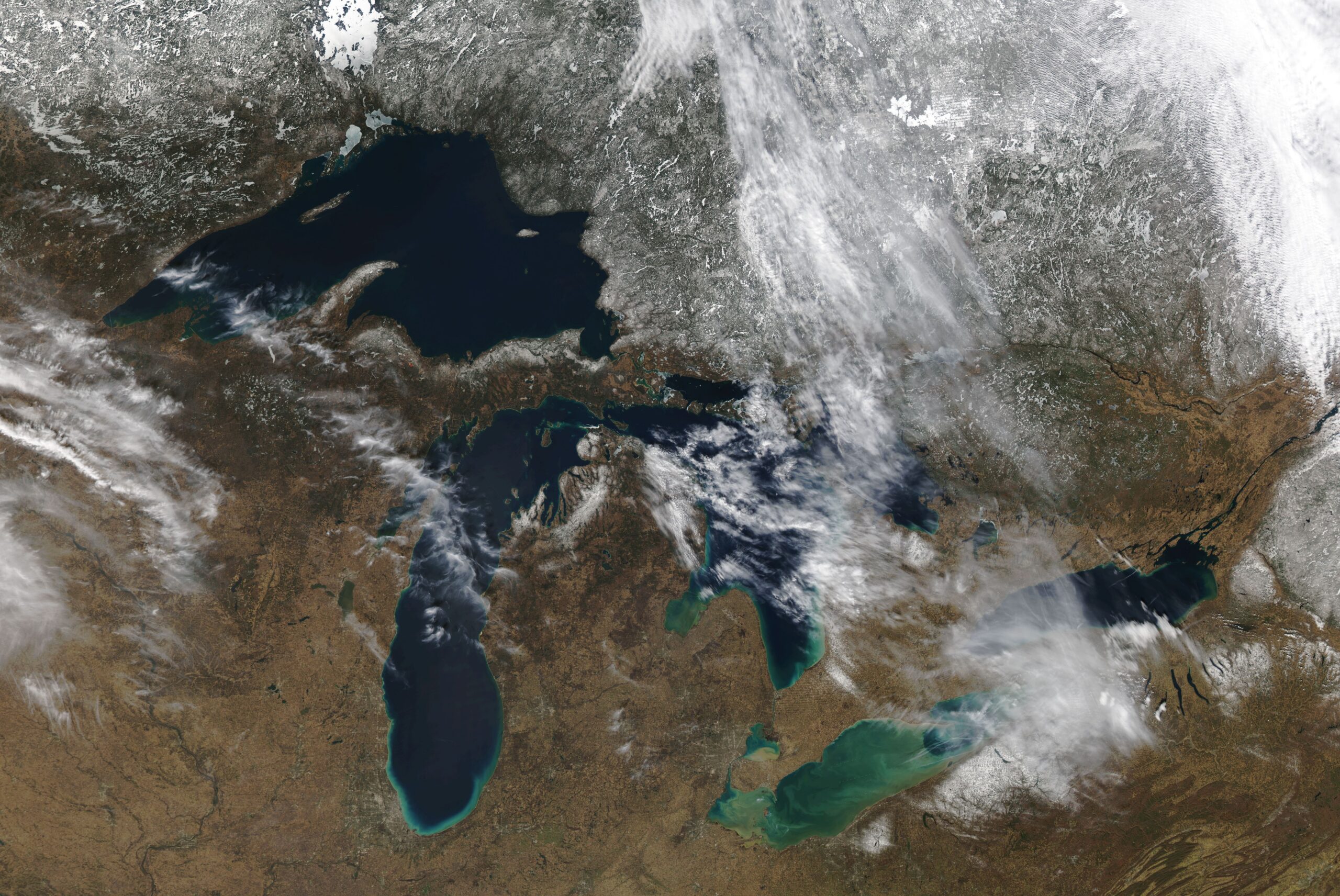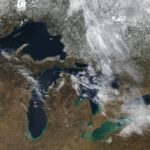As we welcome the first day of spring, many people are curious how 2024’s Great Lakes ice cover data officially stacks up against previous years. But because ice cover typically peaks in late February or March, the Great Lakes ice season actually extends through much of the spring, into late April or early May. (In years with high ice cover, the northern areas of Lake Superior can still have ice as late as June!)
Although this year’s ice is lower than usual, NOAA GLERL will continue monitoring ice conditions through April as in past years. In the meantime, here’s a look at the numbers from this ice season so far.

Annual Maximum Ice Cover
Maximum ice cover on the Great Lakes peaked at 16% on January 22nd, which gives 2024 the fourth lowest annual maximum ice cover for the five lakes as a whole since records began in 1973. Additionally, Lake Huron set a new low record for its annual maximum ice cover, peaking at 22.6% on the same date. The previous record low for Lake Huron was 23.1% in 2012.
While Lake Superior’s ice cover was also the fourth lowest on record, this lake would have set a record low if not for a cold snap that brought its ice from 2.6% to 12% in a single day.
Average Ice Cover from January 1 to March 17
While it’s interesting to look at the numbers for maximum Great Lakes ice cover, Lake Superior’s one-day spike this year is a great example of how maximum ice values don’t tell the whole story. Looking at average ice throughout the season is more relevant for studying long term trends. In 2024, average Great Lakes ice cover from January 1st through March 17 set a record low. Average ice cover for this time period was 5.0%, breaking the previous record low of 5.5% set in 2012. It’s most likely that once the season is over, the final seasonal average will rank among the lowest recorded.
Looking at the lakes individually, Lakes Superior, Michigan and Huron all broke their low records for average ice during this time period as well.

Current Conditions and Remainder of the Ice Season
Currently, Great Lakes ice cover is less than 1%. Cold air masses may still bring cooler temperatures to the region throughout early spring; however, air temperatures are unlikely to stay below freezing long enough to cause any notable increase in lake ice. As the northernmost lake, Lake Superior could see an uptick in shoreline ice if cold temperatures persist, but in the end this would not change the record-low status of this year’s ice cover.

Check back later this spring for a final assessment of the 2024 ice season!
Additional Resources
Learn more about NOAA GLERL’s ice cover research on our ice homepage.
Read this Q&A with GLERL Scientists on causes and impacts of this year’s low ice cover.
Explore Great Lakes Ice Cover Statistics on the NOAA Great Lakes CoastWatch Node.
NOAA Research story: Great Lakes ice cover reaches historic low
Climate.gov story: How warm winters and low ice may impact the Great Lakes

